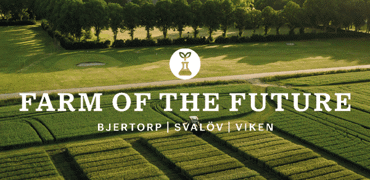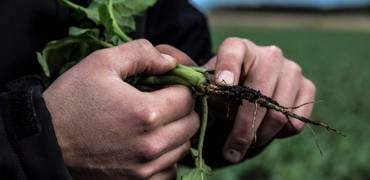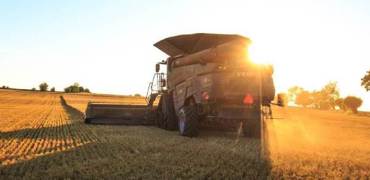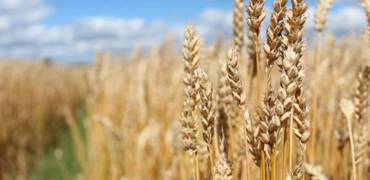Consequences and actions in case of drought

Early summer of 2023 has been unusually dry, which affected the harvest in many parts of Sweden. However, action can be taken already this year and long-term investments and initiatives can be made to create better farming conditions in a changing climate. Johannes Åkerblom is Head of Crop cultivation at Lantmännen and comments on Lantmännen’s work to support their members in case of drought.
The 2023 growing season began with cool and dry weather. In the beginning of July, it rained in large parts of the country, which is positive, but a great part of the harvest potential has already been lost as a result of the drought in May and June. On better, more water-holding soils where the crop has found water further down in the soil layers, the fields can now benefit from the rain, especially regarding the size of the kernels in the ear. But on weaker soils and in dry areas, the crop is burned down and the rain came too late, after the harm was already made. The harvest potential varies a lot within the country, and is largely determined by how far the crops have developed once the rains fall, and on crop and soil type.
This year's harvest will be lower than the average in Sweden, which is shown in Lantmännen's harvest forecast, but how much lower per hectare depends on the crop. Autumn crops that develop deeper root systems are generally more robust than spring crops and the proportion of autumn-sown crops was very large this season.
Grass is the most cultivated crop in Sweden. In drought-affected areas, there have been very weak first harvests of grass, but rain in late June and early July can make a big difference to the second, third and sometimes fourth harvests of grass. The harvest loss can be mitigated to some extent. Other crops such as potatoes and sugar beets also benefit from later rains.
It has only been five years since we last had major problems with drought in Sweden and the lessons learned from that experience have been applied to this year's harvest season. An important area is how feared shortages of roughage can be managed. At Lantmännen, we have now developed strategies for this, which are communicated to our members and customers – Swedish farmers. Among other things, you can give alternative forms of roughage early on, sow annual forage crops that can be harvested in the autumn, and handle roughage silage in an optimal way. Through our newsletters about grass, we reach out to many subscribers as well as sharing knowledge of feed handling more broadly with all customers on LM2, a digital platform for our members.
Another important area is seed planning. Some crops that have been negatively affected by the drought will be seeded next year. Here, Lantmännen is prepared with superimposed goods. With the experience from 2018 we are also working in parallel with authorities to simplify processes for reclassifying crops as seed crops.
In the long term, all parts of Swedish agriculture need to mitigate the effects of a changing climate, and plant breeding in particular will play an important role in meeting the challenges in that area going forward. Lantmännen's new facility at Farm of the Future Svalöv will create conditions for a world-leading plant breeding technology here in Sweden.
“Vallyftet”, a grass project in collaboration with Yara, recently arranged a meeting related to forage shortages. Examples of annual forage crops that are now being established to fend off forage shortages are Italian ryegrass, Westerwoldian ryegrass, and a fast-growing Sudan grass. By offering different varieties for different growing conditions, such as varieties suitable for irrigation, or other varieties for cultivation without irrigation, conditions are created for more resilient crop cultivation.
Finally, perhaps the most important area for meeting more extreme weather conditions is irrigation and drainage – an area that requires major investments. In the past, it has mainly been used for special types of cultivation such as potatoes. In recent years, it is increasingly interesting even for grasslands. Better water storage and irrigation can benefit both the environment and production.
Developing our readiness for drought and climate change is an important part of our work to make Swedish farming thrive and to secure the Swedish food supply. High, stable levels of harvests are a prerequisite for both economic and environmental sustainability within farming. This is what Lantmännen is working towards, both short term and long term, to reach our vision, Farming of the Future.























